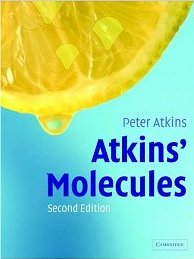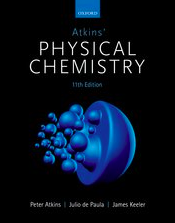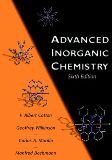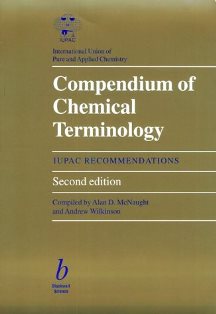Post IB text books
Introduction
It is well worth considering building up a library of a few essential books that go beyond the IB level. You may wish to keep these in your school's main library or build up a small Chemistry library within the department for ease of access. Most schools try to keep at least one copy of some of the classic university texts. There are several reasons for this:
- Bright students should be encouraged to extend their knowledge and understanding.
- You can check out contentious facts yourself. For example Atkin's Physical Chemistry explains why equilibrium constants do not have units and why a pH scale of 0 - 14 and the definition pH = log10[H+(aq)] do not contradict each other when it comes to the pH of 2.0 mol dm-3 hydrochloric acid solution. For definitions the free IUPAC Gold Book of Chemical terminology is well worth having. This is particularly true for the new programme as efforts have been made to standardise IB chemistry with the Gold book.
- Several of the books can be very useful when it comes to Chemistry extended essays as students will need to read beyond what is on the chemistry syllabus.
There are obviously many good books that you could consider. One way is to approach your local university and see what their reading list is for undergraduate students. Given below is one excellent example each for an Organic, an Inorganic and a Physical Chemistry book. These three books are used in universities worldwide. There is also a good book on inorganic analysis (which is also mentioned in the EE section), a book that gives the definitive answers to IUPAC naming and the correct use of units and a couple of other books that are really excellent reading.
Book list and details
 P.W. Atkins, Atkin's Molecules, 2nd Ed., Cambridge University Press, 2003,
P.W. Atkins, Atkin's Molecules, 2nd Ed., Cambridge University Press, 2003,
ISBN 978-0521535366
(Some good information on specific important molecules. In this new edition of the book 'Molecules' which was described by the New Scientist as "the most beautiful chemistry book ever written," Peter Atkins reveals the molecules responsible for the experiences of our everyday life in fabrics, drugs, plastics, explosives, detergents, fragrances, tastes, and sex.)
 Peter Atkins, Julio de Paula, and James Keeler, Atkins' Physical Chemistry (11th Ed)., Oxford University Press, 2017, ISBN 9780198769866
Peter Atkins, Julio de Paula, and James Keeler, Atkins' Physical Chemistry (11th Ed)., Oxford University Press, 2017, ISBN 9780198769866(The standard university text book on Physical Chemistry)
 J. Basset et al.,Vogel’s Textbook of Quantitative Inorganic Analysis 6th Ed., Prentice Hall, 2000, ISBN 0582226287
J. Basset et al.,Vogel’s Textbook of Quantitative Inorganic Analysis 6th Ed., Prentice Hall, 2000, ISBN 0582226287
(Useful for extended essays)
 F.A. Cotton & G. Wilkinson et al., Advanced Inorganic Chemistry 6th Ed., Wiley & Sons, 1999,
F.A. Cotton & G. Wilkinson et al., Advanced Inorganic Chemistry 6th Ed., Wiley & Sons, 1999,
ISBN 978-0-471-19957-1
(Still the ‘bible’ for Inorganic Chemistry at universities even after all these years)
 N. Hall (Ed)., The age of the molecule, Royal Society of Chemistry, 1999, ISBN 0-85404-945-2
N. Hall (Ed)., The age of the molecule, Royal Society of Chemistry, 1999, ISBN 0-85404-945-2
(No school should be without this book. It will inspire everyone that reads it to want to do research in Chemistry! One of the best books on Chemistry I’ve seen in years.)
 C.E. Housecroft & E.C. Constable, Chemistry – an integrated approach, 1997, Prentice Hall, ISBN 978-0582253421
C.E. Housecroft & E.C. Constable, Chemistry – an integrated approach, 1997, Prentice Hall, ISBN 978-0582253421
(A text book for first year university students which contains some useful material for the options.)
 I. Mills, T. Cvitas et al., Quantities, Units and Symbols in Physical Chemistry 3rd Ed., IUPAC, RSC publishing, 2007, ISBN 978-0-85404-433-7
I. Mills, T. Cvitas et al., Quantities, Units and Symbols in Physical Chemistry 3rd Ed., IUPAC, RSC publishing, 2007, ISBN 978-0-85404-433-7
(The IUPAC definitive work for all those who worry or argue about the precise meaning of units and symbols. This book can now be downloaded direct from the Internet)
 Morrison & Boyd, Organic Chemistry 6th Ed., Prentice Hall, 1992, ISBN 978-0136436690
Morrison & Boyd, Organic Chemistry 6th Ed., Prentice Hall, 1992, ISBN 978-0136436690
(Useful for all the organic finer points. This book, which has been used in universities for many years, can now be downloaded direct from the Internet)
 P. Powell, Principles of organo-metallic chemistry 2nd Ed., Springer, 1998,
P. Powell, Principles of organo-metallic chemistry 2nd Ed., Springer, 1998,
ISBN 978-0412428302
(It might be worth having one good book that covers the basics of organometallic chemistry at university level.)
 IUPAC Compendium of Chemical Terminology (Gold Book). This can be downloaded as a free pdf file
IUPAC Compendium of Chemical Terminology (Gold Book). This can be downloaded as a free pdf file![]() .
.
(The Compendium is popularly referred to as the "Gold Book", in recognition of the contribution of the late Victor Gold, who initiated work on the first edition. It collects together terminology definitions from IUPAC recommendations already published in Pure and Applied Chemistry and in the other Colour Books.)

 IB Docs (2) Team
IB Docs (2) Team